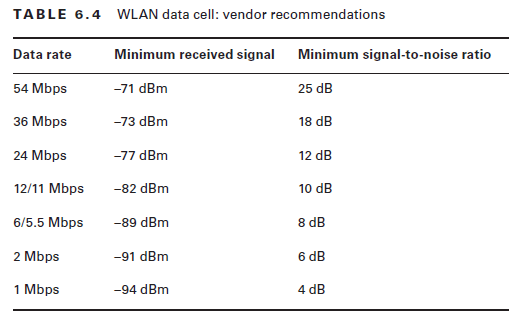Basic Rates & Supported Rates
IEEE 802.11-2007 standard defines required rates as basic rates. For a client
station to successfully associate with an AP, the station must be capable of communicating by using the configured basic rates that the access point requires.
In addition to the basic rates, the access point defines a set of supported rates. This set of supported rates is advertised by the access point in the beacon frame and is also in some of the other management frames.After a station associates with an access point, it will use one of the advertised supported rates to communicate with the access point.
Dynamic Rate Selection
Also know as Dynamic Rate Shifting, Adaptive Rate Selection,Automatic Rate Selection. If you watch this 5 min CWNP video you will understand this concept well.
In simple terms as client station radios move away from an access point, they will shift down to lower bandwidth capabilities by using a process known as dynamic rate switching (DRS). Access points can support multiple data rates depending on the spread spectrum technology used by the AP’s radio card. Below diagram shows HR-DSSS (802.11b or Clause 18) AP client dynamically shift rates based on the signal quality (RSSI, SNR) it receive from the AP.
 The objective of DRS is up-shifting and downshifting for rate optimization and improved performance. The algorithms used for dynamic rate switching are proprietary and are defined by radio card manufacturers. Most vendors base DRS on receive signal strength indicator (RSSI) thresholds, packet error rates, and retransmissions. Because vendors implement DRS differently, you may have two different vendor client cards at the same location, while one is communicating wit the access point at 11 Mbps and the other is communicating at 2 Mbps. Below is an sample chart showing the RSSI & SNR to achieve particular data rate for a given WLAN vendor. (page 227 – CWAP Official Study Guide)
The objective of DRS is up-shifting and downshifting for rate optimization and improved performance. The algorithms used for dynamic rate switching are proprietary and are defined by radio card manufacturers. Most vendors base DRS on receive signal strength indicator (RSSI) thresholds, packet error rates, and retransmissions. Because vendors implement DRS differently, you may have two different vendor client cards at the same location, while one is communicating wit the access point at 11 Mbps and the other is communicating at 2 Mbps. Below is an sample chart showing the RSSI & SNR to achieve particular data rate for a given WLAN vendor. (page 227 – CWAP Official Study Guide)
 Here is an example for Cisco 1262 AP receive sensitivity details listed in the AP specs.
Here is an example for Cisco 1262 AP receive sensitivity details listed in the AP specs.


Is the rate selected for the downlink separate from the rate selected for the uplink? That is, does the AP figure out a rate that it can successfully use to transmit to the client independently of the client choosing a rate for its transmissions? This would make sense since the transmit power of the AP could be higher and therefore the RSSI of that transmission when received by the client would be better than the transmission at lower power by the client when received by the AP.